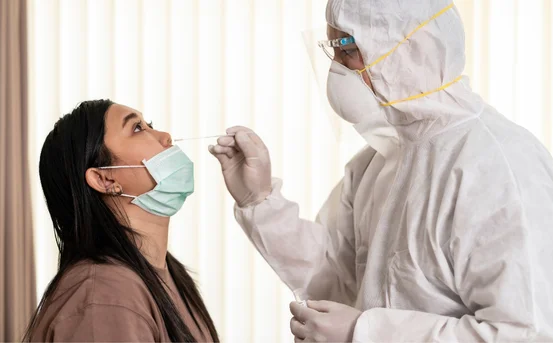Symptoms indicating mastectomy for men, they associate it with breast cancer in women. However, men can also develop conditions that may require a mastectomy, including male breast cancer and severe cases of gynecomastia (enlarged male breast tissue). Though it’s a rare procedure in men, understanding the symptoms indicating mastectomy for men is vital for early intervention and successful treatment. While mastectomy in men is relatively rare compared to women, it’s not unheard of and it can be absolutely necessary in certain medical scenarios. Unfortunately, due to the low awareness surrounding male breast disorders, many men ignore early warning signs or delay seeking medical help, often mistaking symptoms for benign or temporary issues.
That’s why it is crucial to increase awareness and educate both the public and healthcare providers about the symptoms indicating a need for mastectomy in men. Early recognition of symptoms such as a lump in the thorax, nipple discharge, or skin changes around the breast area can lead to timely diagnosis and more effective treatment. In many cases, early intervention through a mastectomy can prevent the spread of disease and significantly improve long-term health outcomes.
Understanding Mastectomy in Men
A mastectomy is a surgical procedure to remove one or both breasts, partially or completely. In men, this is most often performed to treat male breast cancer or, in some cases, severe gynecomastia that is not responsive to medication or lifestyle changes.
Although breast cancer in men is rare (it accounts for less than 1% of all breast cancers), it can be aggressive and life-threatening if not diagnosed and treated early.
Key Symptoms That May Indicate the Need for Mastectomy in Men
Here are the most common symptoms that may suggest a need for mastectomy in men. If you or someone you know experiences any of the following signs, consult a healthcare provider promptly:
- Lump or Mass in the Breast Area
A painless lump or thickening near the breast or under the nipple is one of the earliest and most concerning signs of male breast cancer. These lumps are usually hard and immobile and may increase in size over time.
What to do :- If you detect a lump, don’t ignore it. Immediate evaluation by a doctor is essential. A biopsy or imaging test may be ordered to determine its nature.
- Nipple Discharge (Especially Bloody)
Unusual discharge from the nipple, particularly clear or bloody fluid, is a potential red flag. Though discharge in men is uncommon, it is more often linked to cancer than in women.
When it matters :- Persistent or bloody nipple discharge warrants urgent medical evaluation and could lead to a mastectomy if malignancy is found.
- Changes in Nipple Shape or Position
Symptoms such as nipple inversion, flattening, retraction, or distortion could be indicative of underlying cancer affecting the breast tissue.
Why it’s serious :- Such changes often accompany malignancies and may be an early symptom requiring surgical removal of the breast tissue.
- Skin Changes Around the Nipple or Breast
Unexplained redness, scaling, thickening, puckering, or dimpling of the skin around the nipple or breast can signal male breast cancer or severe infection.
Associated risks :- If such skin changes persist, especially if they appear on only one side, a biopsy may be needed. Mastectomy may be part of the treatment if cancer is confirmed.
- Swollen Lymph Nodes Under the Arm
Swelling or lumps under the arm (in the axillary lymph nodes) can be a symptom of breast cancer spreading to the lymphatic system.
Clinical action :- Enlarged lymph nodes often accompany advanced breast cancer in men and may lead to surgical intervention including mastectomy and lymph node dissection.
- Persistent Pain in the Breast or Nipple
While not always associated with cancer, unexplained chronic pain in the breast area can indicate inflammation, infection, or tumor growth.
Important note :- Pain that does not resolve with medication or recurs frequently should be investigated by a specialist.
- Enlargement of Breast Tissue (Gynecomastia)
Gynecomastia is a non-cancerous enlargement of male breast tissue, often caused by hormonal imbalances, medication side effects, or underlying health conditions.
When surgery is needed :-
- If gynecomastia causes emotional distress
- If it’s painful or interferes with daily life
- If there’s suspicion of an underlying tumor
Common Causes Behind These Symptoms
Understanding the underlying causes can help identify risk factors and promote early diagnosis.
- Hormonal Imbalances :- An increase in estrogen or a drop in testosterone can lead to gynecomastia or raise cancer risk.
- Genetic Factors :- Men with BRCA1 or BRCA2 gene mutations have a higher risk of developing breast cancer.
- Medications :- Certain drugs, including anabolic steroids, anti-androgens, and some psychiatric medications, can cause breast tissue changes.
- Liver or Kidney Disease :- These conditions can affect hormone levels, potentially leading to breast enlargement or cancerous changes.
- Radiation Exposure :- Prior exposure to radiation in the chest area increases the risk of breast cancer in men.
- Age :- Most male breast cancers are diagnosed between ages 60 and 70.
Diagnosis: How Are These Symptoms Evaluated?
If you experience any of the symptoms listed above, your doctor may order several tests to reach a diagnosis:
- Physical Examination
- Mammogram
- Breast Ultrasound
- MRI Scan (in certain cases)
- Biopsy (Fine Needle Aspiration or Core Needle Biopsy)
- Hormonal and Genetic Testing (if cancer is suspected)
These diagnostic tools help determine whether a mastectomy is necessary and what type of surgery is best suited.
Types of Mastectomy for Men
Depending on the diagnosis and severity, the following types of mastectomy may be recommended:
- Simple (Total) Mastectomy :- Removal of the entire breast tissue, including the nipple. Commonly used in early-stage male breast cancer.
- Modified Radical Mastectomy :- Removes the entire breast along with lymph nodes in the armpit. Often used when cancer has spread locally.
- Subcutaneous Mastectomy :- Preserves the skin and nipple while removing underlying glandular tissue. Typically performed for gynecomastia rather than cancer.
- Preventive Mastectomy :- For men with a strong family history or BRCA gene mutation, a preventive mastectomy might be considered to reduce cancer risk.
Treatment Beyond Surgery
Mastectomy is often part of a multi-modal treatment plan that may include:
- Radiation Therapy
- Chemotherapy
- Hormone Therapy (e.g., Tamoxifen for hormone receptor-positive tumors)
- Targeted Therapy (for HER2-positive cancers)
Recovery and Outlook
Recovery from mastectomy in men is generally faster than in women due to less extensive breast tissue. Most men can resume normal activities within 4 to 6 weeks, depending on the procedure and presence of other treatments like chemotherapy. With early detection and treatment, male breast cancer is highly manageable, and survival rates can be favorable.
Conclusion
While breast cancer and mastectomy are often viewed through a female lens, men must not ignore concerning breast symptoms. Early diagnosis significantly improves outcomes, and in some cases, mastectomy may be life-saving. Men should be vigilant about any unusual changes in their chest area, including lumps, nipple discharge, or skin abnormalities. These signs can be early indicators of male breast cancer, a condition that, while rare, tends to be more aggressive when diagnosed late.
Recognizing and acting on these symptoms early can lead to faster diagnosis, more effective treatment, and improved survival rates. In many cases, a mastectomy or surgical removal of breast tissue may be necessary to treat the cancer effectively or to manage severe gynecomastia that doesn’t respond to other treatments.























